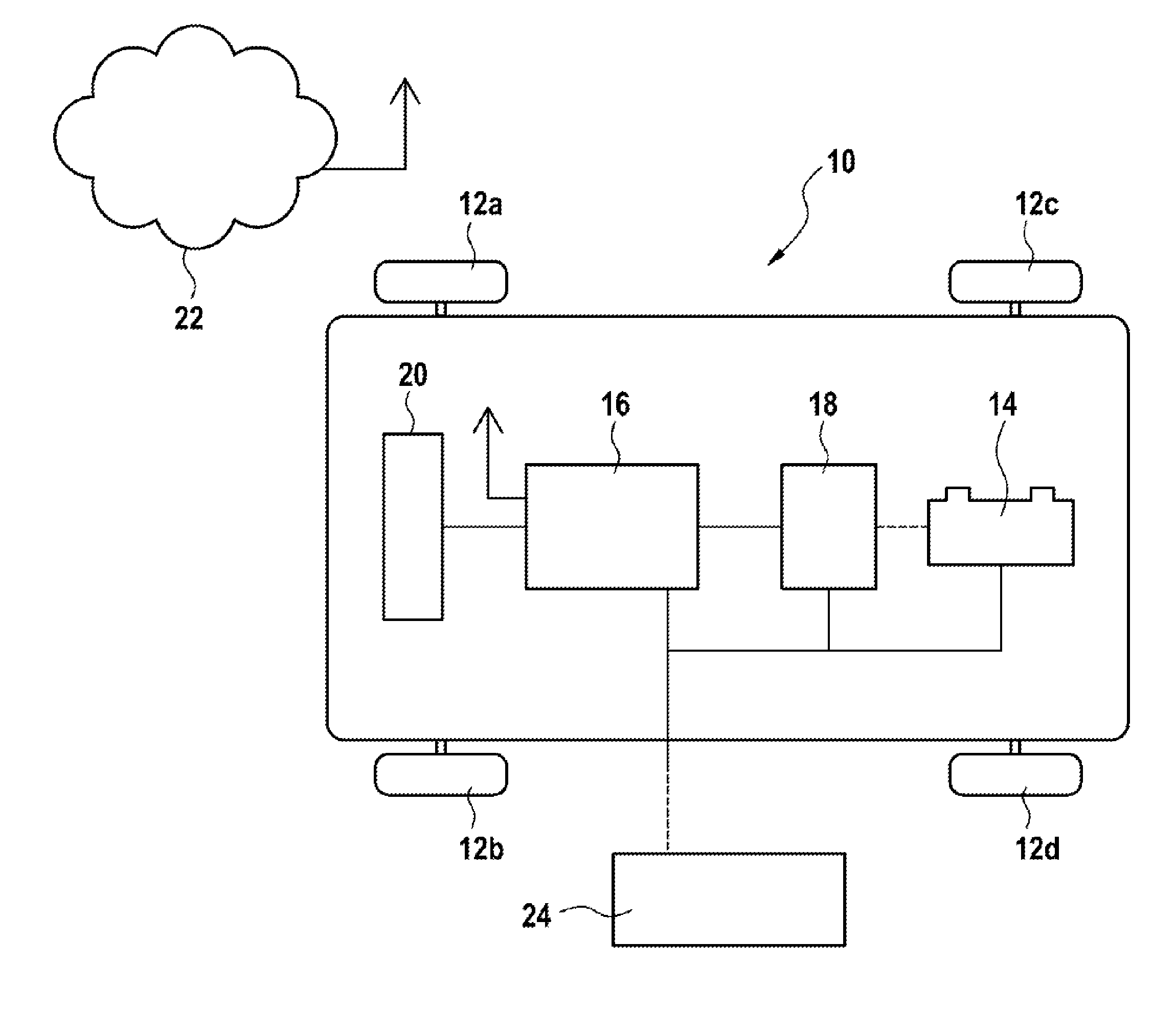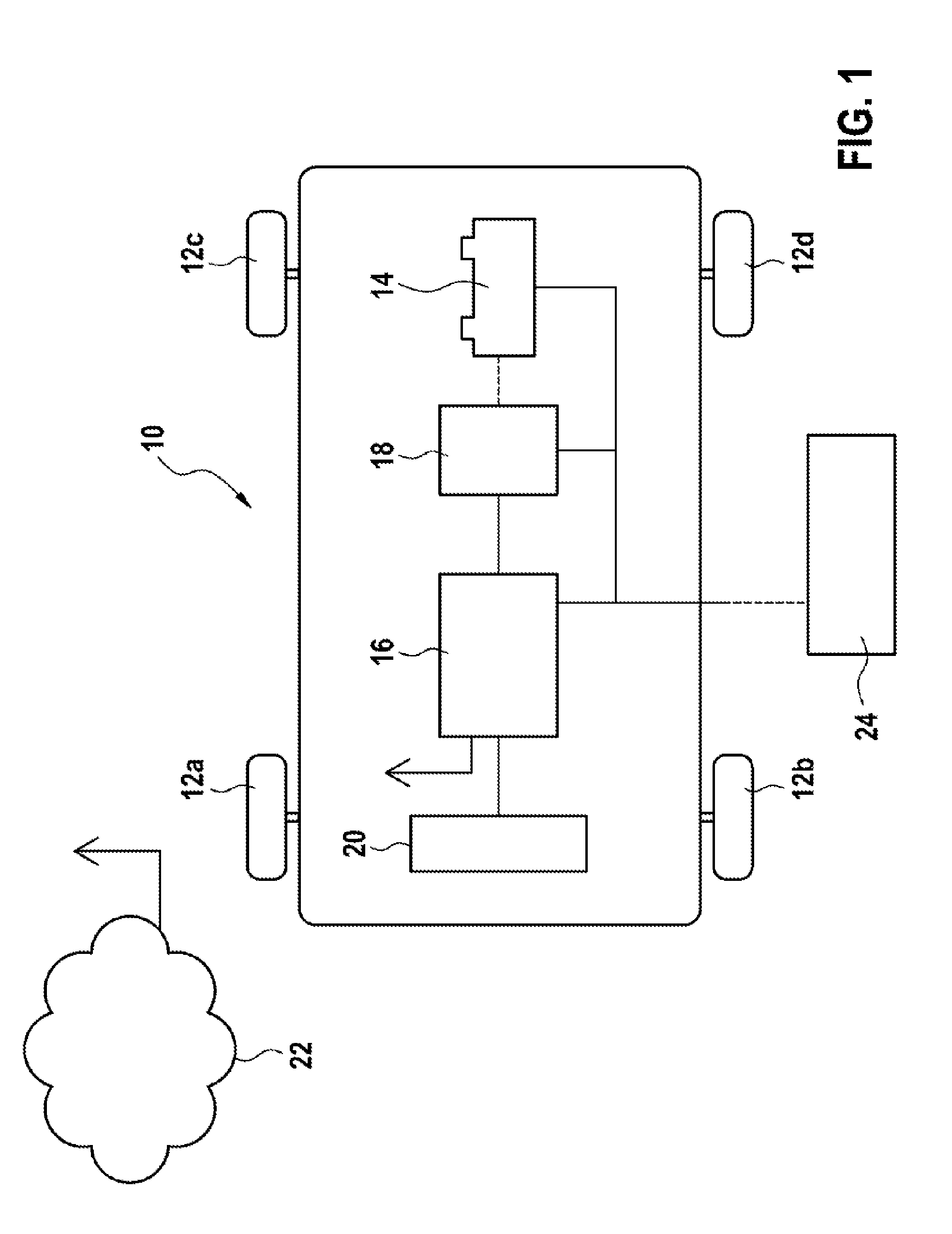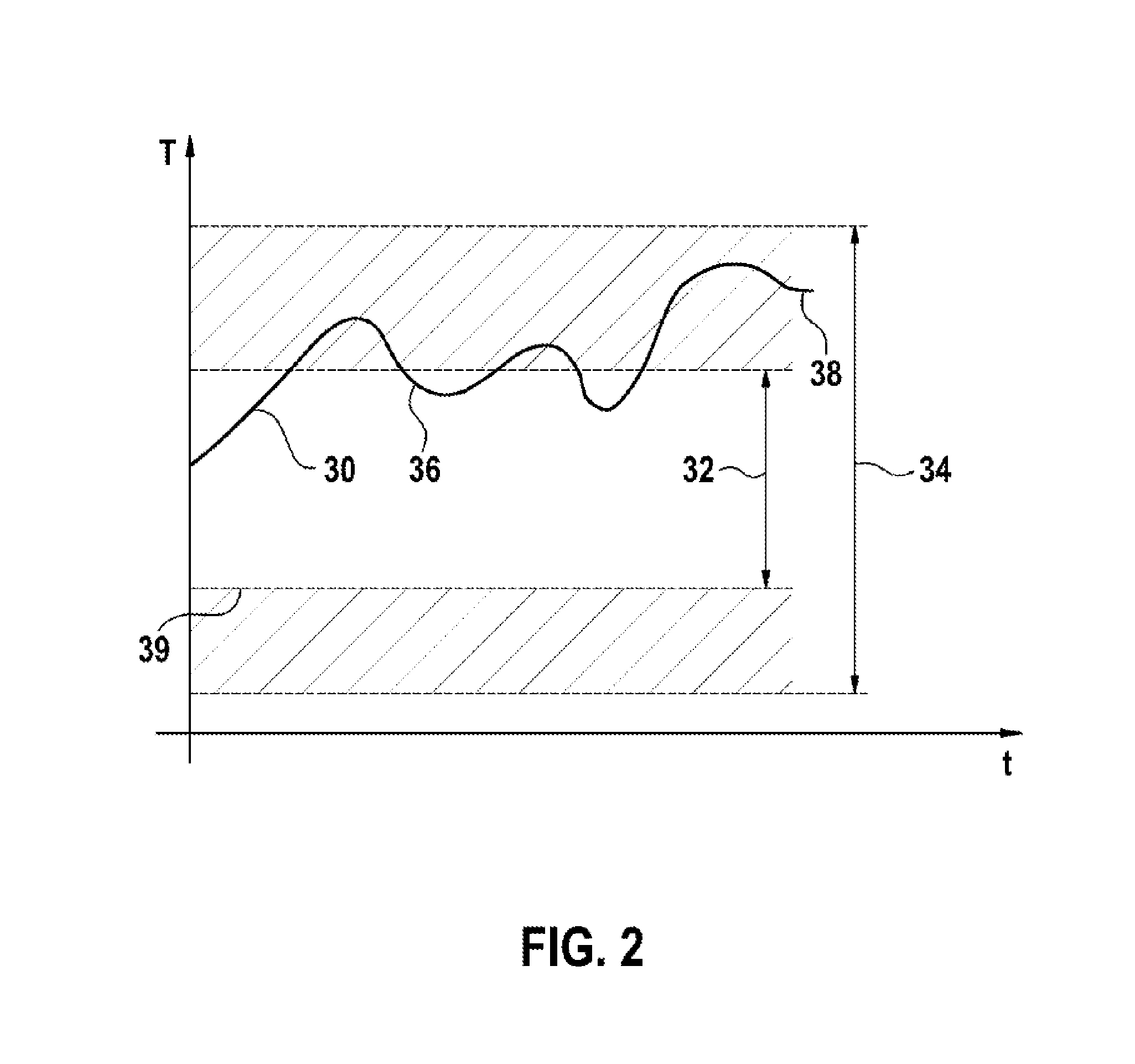Method and apparatus for operating a battery arrangement of a motor vehicle
- Summary
- Abstract
- Description
- Claims
- Application Information
AI Technical Summary
Benefits of technology
Problems solved by technology
Method used
Image
Examples
Embodiment Construction
[0043]FIG. 1 illustrates a schematic view of a motor vehicle that is denoted in general by the numeral 10. The motor vehicle 10 comprises an electric drive train for the purpose of providing the drive output and said drive train is not described in detail in FIG. 1. The electric drive train is used for the purpose of driving a defined number of wheels 12 of the motor vehicle 10.
[0044]In an alternative embodiment, the motor vehicle 10 can comprise a conventional drive train having a combustion engine or a hybrid drive train having a combustion motor and an electric machine.
[0045]The motor vehicle 10 comprises a battery arrangement 14 in the present example a traction battery 14 that is used as an electric energy storage device for the electric drive train of the motor vehicle 10. Moreover, the motor vehicle 10 comprises a device 16 in accordance with the invention for the purpose of operating the battery arrangement 14. The device 16 is electrically coupled to a heating / cooling arran...
PUM
 Login to View More
Login to View More Abstract
Description
Claims
Application Information
 Login to View More
Login to View More - R&D
- Intellectual Property
- Life Sciences
- Materials
- Tech Scout
- Unparalleled Data Quality
- Higher Quality Content
- 60% Fewer Hallucinations
Browse by: Latest US Patents, China's latest patents, Technical Efficacy Thesaurus, Application Domain, Technology Topic, Popular Technical Reports.
© 2025 PatSnap. All rights reserved.Legal|Privacy policy|Modern Slavery Act Transparency Statement|Sitemap|About US| Contact US: help@patsnap.com



